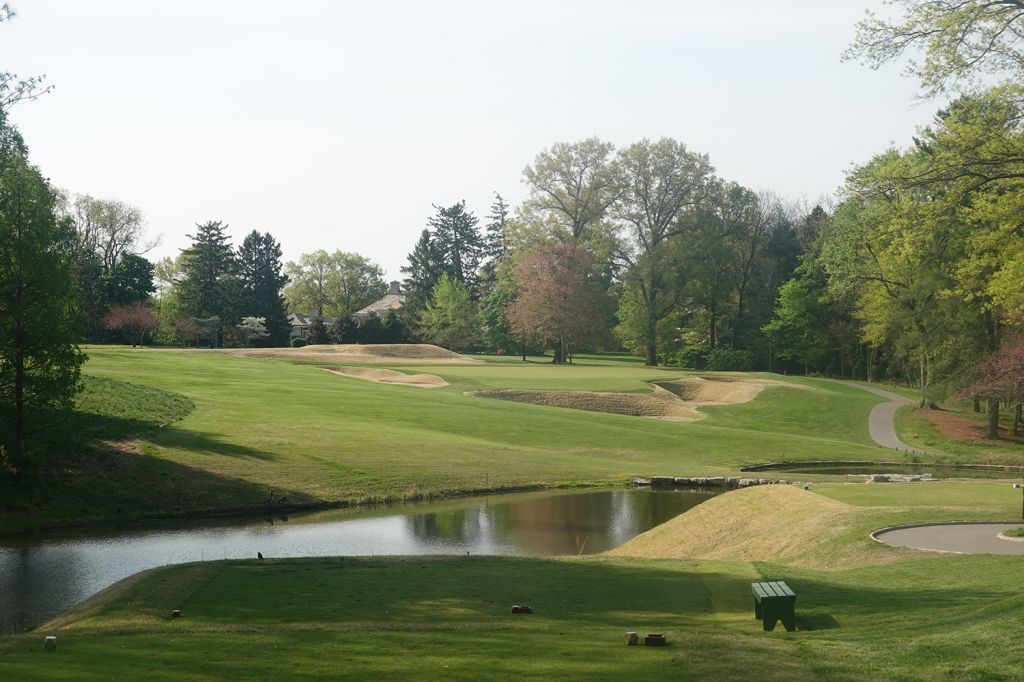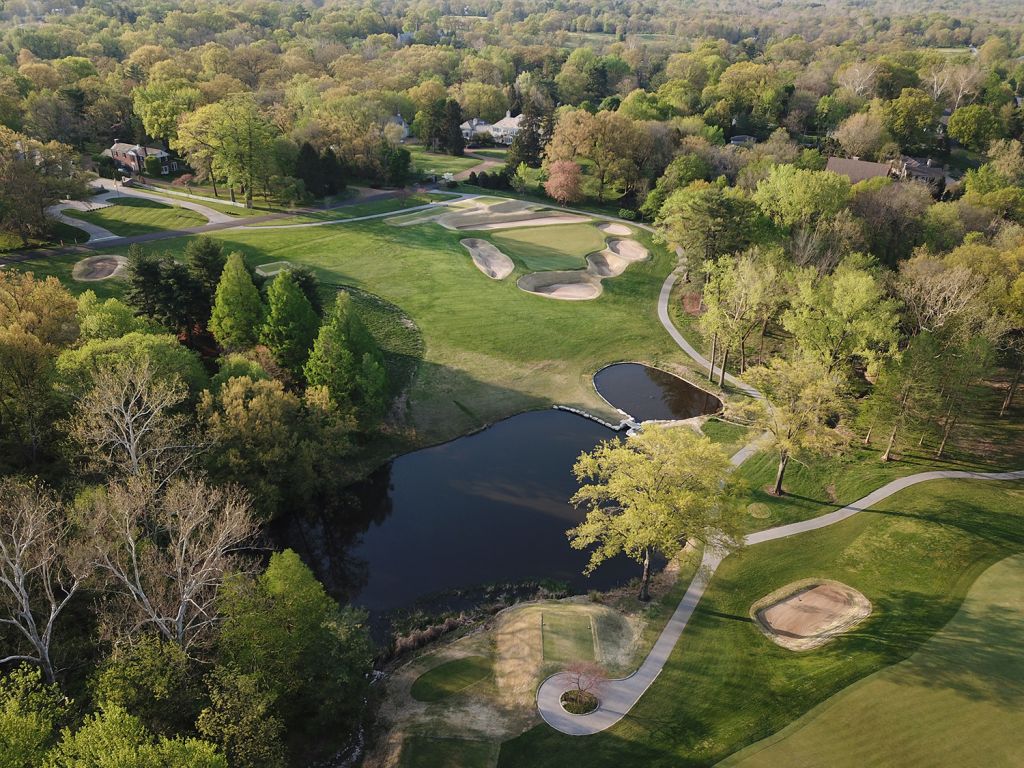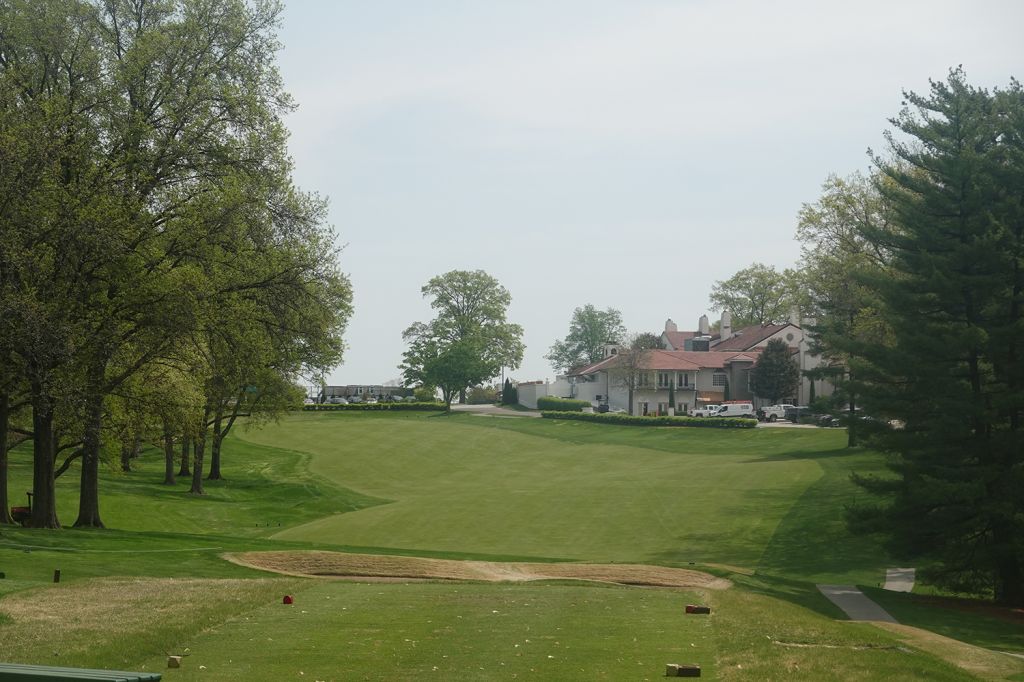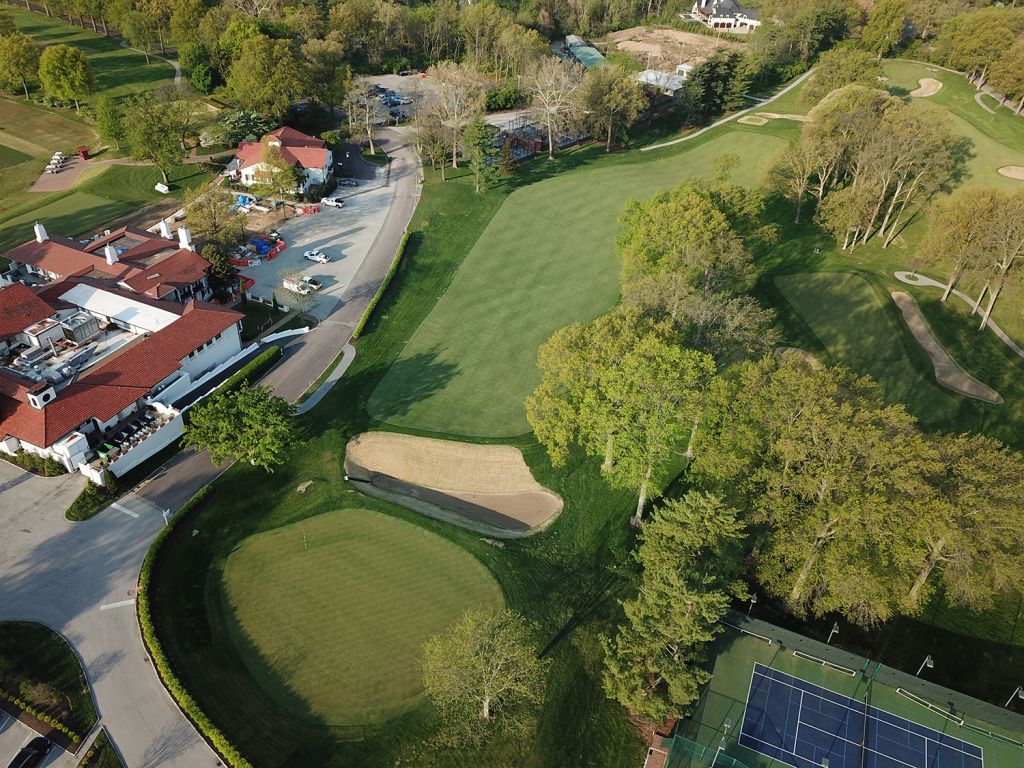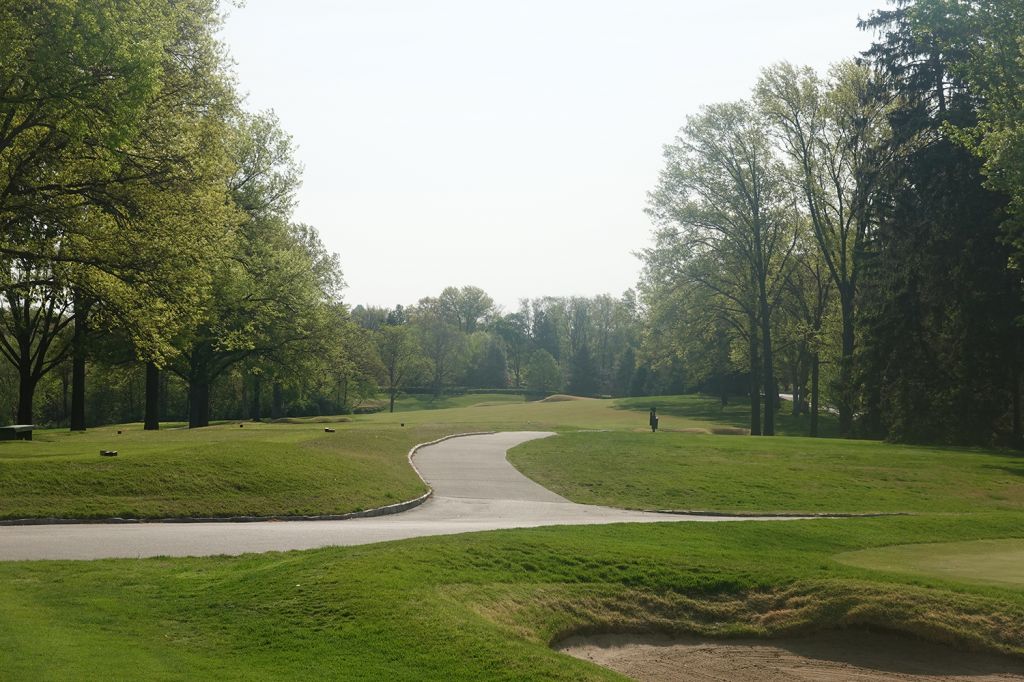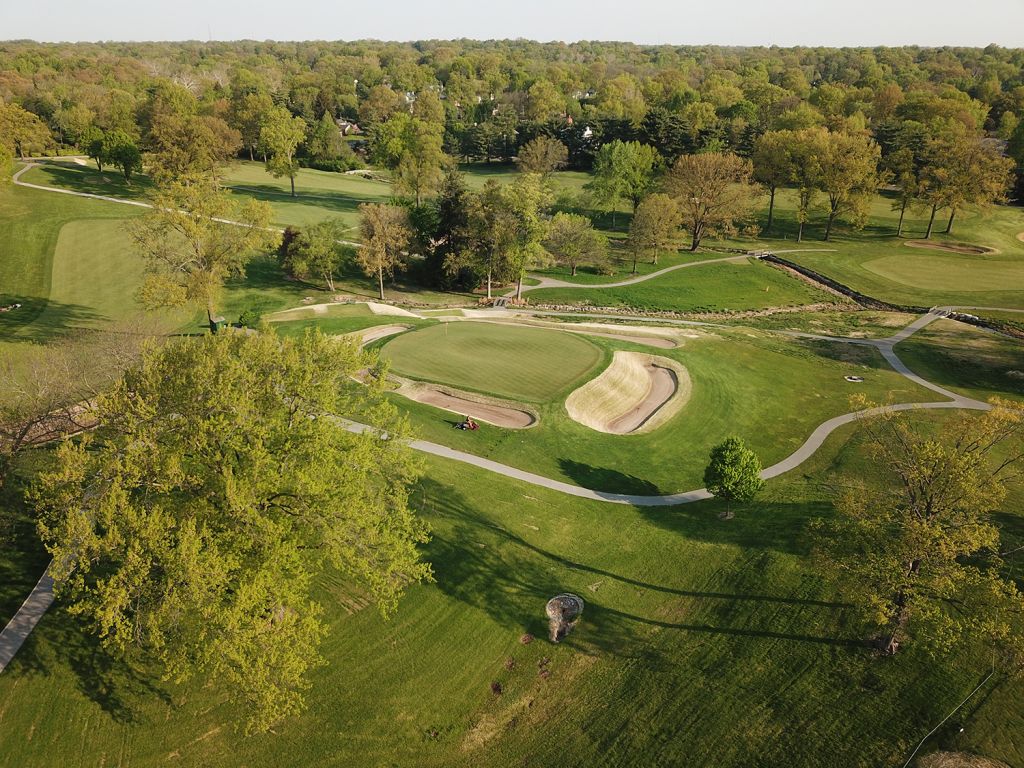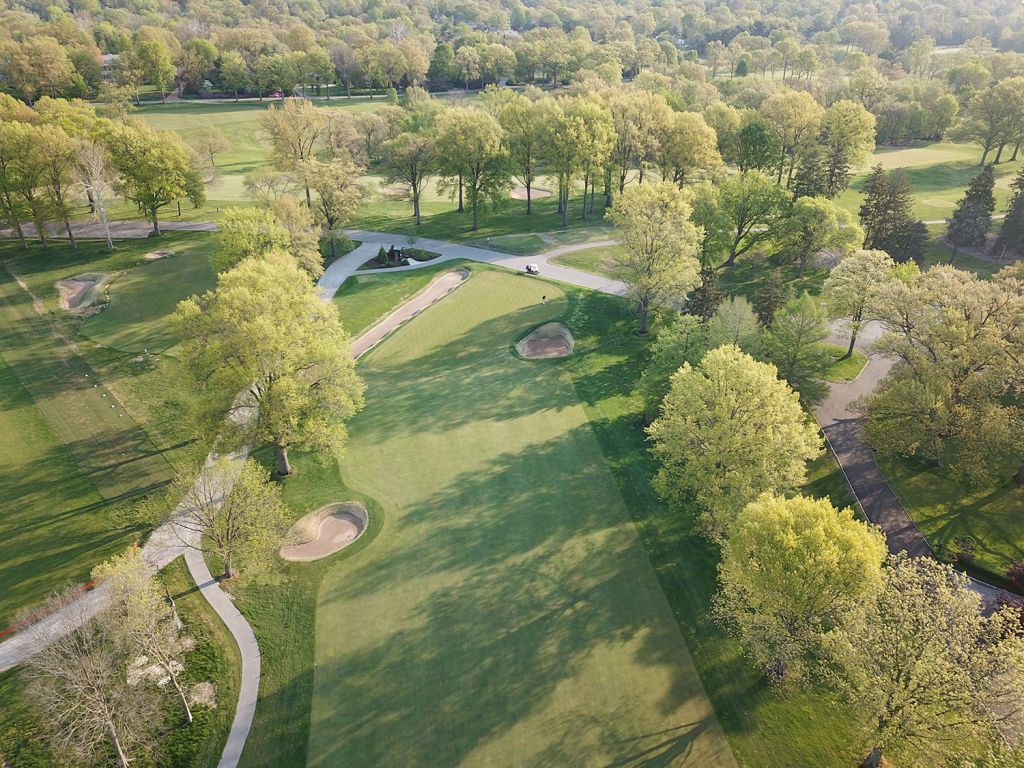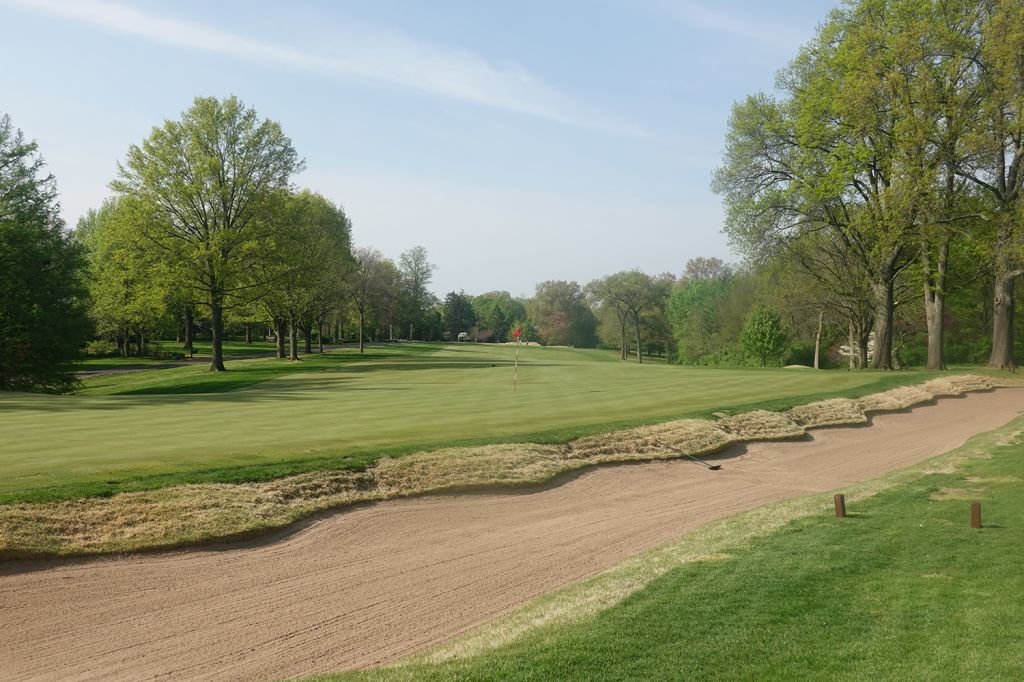 Golf Course Review by: Billy Satterfield
Golf Course Review by: Billy Satterfield
Rankings:
The Takeaway: A course worthy of study by any C.B. Macdonald fan, St. Louis CC brilliantly molds to the undulated terrain and requires superior shot making to conquer the relatively short layout. The excellent routing finishes with the best closing hole of any Macdonald course. Grade A
Quick Facts
Designer: C.B. Macdonald 1914
Cost: Private
Phone Number: 314-994-0011
Course Website: Official Website - Visit St. Louis Country Club's official website by clicking on the link provided.
Directions: Get here! - 400 Barnes Rd., St. Louis, Missouri 63124 – UNITED STATES
Photos: See additional photos of St. Louis Country Club
What to Expect: Located on the west side of the Gateway City, St. Louis Country Club is a classic Charles Blair Macdonald design on wonderfully undulated terrain where there is hardly a flat lie on the property. This tends to put a premium on the shot making skill players will need to have while navigating the course. Early in the routing you’ll contend with back-to-back par threes on the 2nd (Biarritz) and 3rd holes; something perhaps most famously done at Cypress Point’s 15th and 16th. The course also boasts a Redan par three near the end of the routing before what could be the best finishing hole of any Macdonald course you’ll find. The length of the course isn't much by today's standards, but the greens and overall firmness of the course compensate for it by requiring precision from players rather than brute strength. From a conditioning standpoint, St. Louis CC is fantastic with pure rolling greens and finely manicured fairways. Players will enjoy their walk around the course by being accompanied by a caddie that will tote their bag around the course and guide them through their round; maybe even help them save a stroke or two. While the length prevents it from being on the radar to host major tournaments today, St. Louis Country enjoys a history as the venue for the 1921 and 1960 U.S. Amateur, 1925 and 1972 U.S. Women's Amateur, and 1947 U.S. Open. In the end, St. Louis CC is just fun. It is a challenge without being overbearing, and there is forgiveness on the course without being able to just hit it anywhere. Great architecture and terrain collide here and provide a course you could play everyday and not tire of it.
By the Numbers
| Tees | Par | Yardage | Rating | Slope |
|---|---|---|---|---|
| Black | 71 | 6625 | 72.6 | 138 |
| Gold | 71 | 6433 | 71.9 | 137 |
| Red | 71 | 6097 | 70.4 | 135 |
| Blue | 71 | 5623 | 68.2 | 131 |
| White (Women) | 71 | 5432 | 72.1 | 128 |
| Green (Women) | 71 | 4625 | 67.2 | 121 |
| Family | 71 | 3504 | 59.9 | 104 |
Individual Hole Analysis
Signature Hole: 14th (Dome) Hole – 416 Yard Par 4 – With a view of downtown St. Louis greeting you on the tee, the course's longest par four plays straight away before traversing slightly downhill to a reverse Redan green. A baby fade off the tee is ideal for keeping your ball safely between the trees and setting up an approach shot that needs to avoid the cavernous bunker flanking the right side of the putting surface. The front of the green is open and receptive to aerial and ground game shots, but the one place you don't want to find yourself is in the small bunker behind the green which is the fate of those whose approach shots come in too hot to take the slope of the green. With green views from the tee and a fantastic green site, the 14th is a pleasure to embark on.
Best Par 3: 3rd (Eden) Hole – 213 Yards – Longer than usual for an Eden hole, and playing uphill, the 3rd hole at St. Louis CC is a challenging one-shotter playing to a classic back-to-front sloping putting surface. The false front and sides are protected by deep bunkering, but any thoughts of playing this hole long will quickly result in a death wish as par saves from the sand in back are few and far between. The second of back-to-back par threes, the Eden hole here is preceded by a quality Biarritz and creates perhaps the best combo of one-shotters you'll ever find within the first three holes of a routing.
Best Par 4: 18th (Oasis) Hole – 412 Yards – Not a template hole like many of St. Louis CC's finest offerings, the 18th is an outstanding two-shotter moulded to the natural contours of the terrain. Many will note how few level lies exist at the course while playing it, but never is it more pronounced than on the final hole of the round. The tee shot plays over a pair of bunkers to a fairway that tilts hard from right to left at the peak of the short grass while also bending to the left at that point. Balls that tumble too far left will find themselves in a moguled rough area with overhanging trees and a poor chance to reach the putting surface on their second shot. The approach shot plays to a green that is fronted by an extremely deep bunker where getting out in one stroke is a feat that many players will fail on their first attempt; and subsequent attempts don't get any easier. Players that can use the fairway's terrain to help sling a shot from right to left onto the green will yield the most successful results and give them an opportunity to walk off the course with a smile on their face after conquering one of the club's best holes.
Best Par 5: 5th (Punchbowl) Hole – 508 Yards – The first of three par fives on the course, the 5th is easily the most memorable and enjoyable to play. A trio of famous MacDonald design features are found here with an Alps approach, Principal Nose bunker, and Punchbowl green. Tee shots that can hug the right side will benefit from having extra room to the left where the fairway feeds. But care needs to be placed in avoiding the single deep bunker on the right side of the driving zone as well as the rib cage bunker complex on the left. From there players can decide whether to challenge the Principal's Nose bunker less than 150 yards from the putting surface or whether to take a rip at the green which will need to stay up the right side to have short grass to tumble down enroute to the Punchbowl green that is flanked by a creek in the rear. The excitement of hitting a long shot blindly into a Punchbowl green cannot be overstated as anticipation mounts with each step taken towards the putting surface in hopes of discovering a legitimate eagle opportunity. This hole is nothing but pure fun and the type you'd like to repeat playing on a consistent basis.
Birdie Time: 7th (Shorty) Hole – 154 Yard Par 3 – Named Shorty for yielding the least amount of yardage from tee to green, the 7th is a great chance to take a stroke back from Old Man Par. While the green is encircled with bunkers, there should be little intimidation felt as players pull a scoring club from their bag and take dead aim at the flag. The green features a thumbprint depression in the center which effectively yields some interesting contours, but even putting from the high point down to the depression should offer some great looks at birdie on this fun and engaging design.
Bogey Beware: 4th (St Andrews) Hole – 410 Yard Par 4 – Just a handful of yards short of being the longest two-shotter at St. Louis CC, the 4th provides an early test that not many golfers pass. The tee shot plays straight away in a NNE direction over two bunkers to a fairway that slopes left towards the overhanging tree line. The approach shot plays to a pseudo reverse Road hole green and bunker complex but instead of a road and wall being behind the putting surface, it is a full length bunker. The pie shaped green poses several interesting pin placements that can quickly yield a bogey or worse if not approached with the respect required, or from the wrong angle. Also playing up a slow but steady incline the whole way, it is easy to leave your approach shot short and test your short game.






